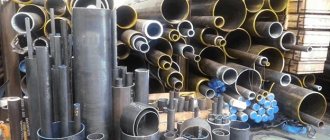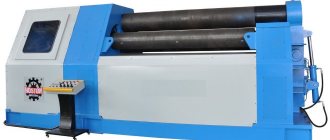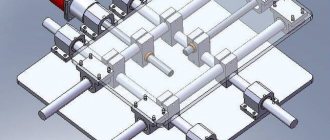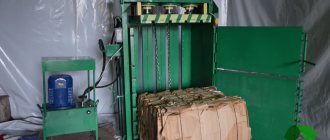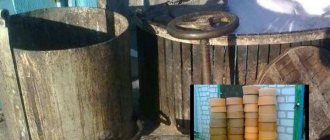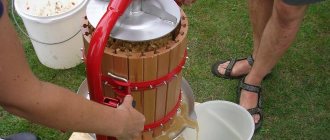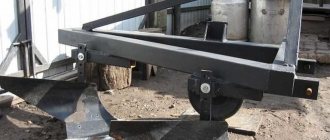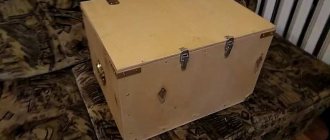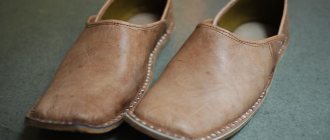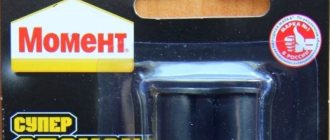Conductive glue is a handy adhesive for many cars and radio enthusiasts. It is used to repair glass heating filaments in cars, to seal wiring, and to solder contacts in keyboards, remote controls, household appliances, and other devices. An adhesive that does not conduct current may impair the performance of the equipment being repaired.
What is Conductive Adhesive
Glue is a viscous substance that is used to join a variety of materials. There are many types of adhesives, each of them has its own characteristics and properties. Among the most popular are stationery (PVC for papers), linoleum (for flooring), conductive (for various electrical circuits and mechanisms).
Photo - Conductive glue.
A conductive two-component adhesive must have the following features:
- Dry quickly, this is necessary for speed of work;
- Have a knitting consistency so that parts of the pattern that do not need to be glued are not damaged during processing;
- Have high adhesion and resistance;
- If you want to use a soldering compound, then you need to choose a heat-resistant glue;
- Be safe for the environment and workers.
This substance is necessary for repairing electrical circuits (keyboards, consumer electronics), constructing various heating mechanisms, floor coverings (warm floors, tiles, glass), etc.
Photo - Elast.
You can buy conductive glue without any problems at any construction or electrical store, the average price is from 100 rubles per 25 grams. At the same time, taking into account the consumption, we see the following picture:
- For PVC coatings, the consumption is approximately 250 grams per square meter;
- Non-PVC (textiles, metal) – 400 grams.
It is much cheaper to prepare conductive glue yourself, especially since the components can be bought at any radio store. Let's look at the most popular recipes.
Price overview
How much does Kontaktol-Keller conductive adhesive cost in different cities of Russia, Belarus and Ukraine:
| City | Price per 100 grams (approximate) |
| Vladikavkaz | 155 |
| Ekaterinburg | 150 |
| Kyiv | 145 |
| Krasnodar | 160 |
| Krasnoyarsk | 166 |
| Minsk | 158 |
| Moscow | 150 |
| Omsk | 170 |
| Samara | 175 |
| Kharkiv | 156 |
| Saint Petersburg | 160 |
Before purchasing, be sure to check the seller’s certificate, this is very important, otherwise you may buy a fake.
Necessary properties of electrically conductive adhesive
A mandatory element in the glue is powdered nickel or fine silver. Alternatively, crushed palladium can be used. The listed components give the composition characteristics of electrical conductivity. The higher the content of an element in a substance, the better the conductivity properties, but the strength of the connection decreases.
To impart good elasticity, without compromising other characteristics, a polymer binder is added to the adhesive composition. The component also provides reliable adhesion to the surface and reduces density. Any type of conductive adhesive must have the following properties and features:
- dry quickly after application to the surface for faster work;
- have a viscous structure so as not to damage microcircuits and other elements during use;
- have high surface adhesion and resistance;
- do not cause harm to people and the environment.
Features and requirements
Binding components and proportions are selected taking into account good elasticity in the frozen state. It should be understood that a percentage increase in conductive components worsens adhesion. Drying for too long makes it difficult to perform work operations. In addition to temperature stability, high safety requirements must be met. As a rule, such mixtures are used in enclosed spaces at a short distance from the user. We need to minimize air pollution.
Areas of application
Amateur radio circuits and homemade designs. In confined spaces, it is difficult to manipulate the soldering iron and solder. Some chips and other expensive electronic components are damaged when overheated. These and other practical problems are solved with the help of conductive adhesive compositions. Examples:
- fastening of piezoelements in radio equipment;
- restoration of heating “strips” on the rear window of a car, torn tracks of printed circuit boards;
- connecting miniature parts while simultaneously creating a conductor;
- reproduction of cold soldering technology.
If necessary, conductive varnish will provide protective functions. The application of such adhesive compositions is used to create “flat” heating elements of a heated floor system.
What are the conclusions?
Of course, there are other recipes for homemade glue, and only the simplest and most common ones are discussed above. Whatever recipe you use, the main thing is that the glue you prepare yourself or buy in a store should have the lowest possible resistivity. And like any other, such glue must provide a strong, reliable and durable connection.
High-quality conductive adhesive ensures the passage of electric current with normalized losses. Such compositions are used to restore printed circuit board tracks and other repair activities. This publication discusses factory-made products and functional analogues that you can make yourself at home.
How to make conductive homemade glue
A very common method is where graphite plays a major role. You need to buy the cheapest quick-drying glue (“Moment”, “Elephant”, “Second”) or varnish. Carefully unscrew the foil from the back of the tube, do not damage the seal on the lid. Now we need a soft pencil M4 or M2. We take the lead out of the pencil, knead it thoroughly to the consistency of powder and pour it into a tube of glue. Use a long match to mix our composition and twist the foil; be sure to secure it at the bottom with pliers so that the adhesive does not leak out during operation.
Video
Conductive adhesive is ideal for solving a variety of problems: attaching flexible cables, repairing heated filaments of a car's rear window, restoring traces on a printed circuit board, assembling homemade electronics, etc.
Specialized stores sell ready-made adhesives that have electrical conductivity - Astrokhim, Kontaktol, Mechanic, AVS Crystal and others. However, such glue is quite expensive, and is also sold in microscopic packages (usually up to 2 ml).
How to make conductive glue with your own hands?
Below are some simple recipes for making conductive glue, gel or lubricant. There is nothing complicated in this process. The only difficulty is finding the necessary components of such glue for contacts.
Recipe one
This recipe for making conductive glue with your own hands is the simplest. For people who don’t really want to spend a lot of time making it, this method is definitely suitable. So, the conductive glue will be based on ordinary superglue in a tube. It can be purchased at many hardware stores and markets. Superglue has certain features that will ensure the creation of a conductive adhesive. Firstly, graphite powder dilutes extremely well in superglue. Secondly, it should be noted that in large volumes this glue hardens rather slowly.
As has already become clear from the above, to make conductive glue you will need graphite powder. There is no need to worry about where you can get it, since it is easy to obtain by chopping the lead of an ordinary pencil. To do this, you can use sandpaper or a file.
Reply to reader
Hello Dmitry! We have the answer to your question, but first, for those readers who do not know what such glue is for, we will give a little introductory information.
Purpose of conductive glue
So, conductive glue is required mainly for radio amateurs and craftsmen who professionally repair household electronics. Very often, for various reasons, breaks form on contacts or conductive paths, which is why the equipment loses some functionality or stops working altogether.
To quickly repair such faults, conductive glue is used for cables. That is, it is applied to the damaged area in a thin strip, without touching adjacent contacts, and after drying, it begins to conduct electricity through the restored circuit.
If you have a radio store within walking distance, then purchasing such a miracle will not be difficult, and the price does not exceed 200 rubles. Among the most popular brands are: Elekont, Kontaktol, Elast (varnish) and others.
But when there are no such stores nearby, finding the compounds becomes problematic. So let's now figure out how to make conductive glue at home with your own hands. The procedure will not take much time and will not require you to use extremely rare components.
Features of conductive adhesive
Before we begin analyzing the recipe, let's figure out what quality the composition should be and what properties it should have.
- It is very important to maintain the correct ratio between the liquid and powder components. For example, if you overdo it with graphite, the glue may begin to poorly adhere to various types of surfaces, and conversely, an insufficient amount of it will lead to an increase in resistance, and as a result, heating of a given point, which is extremely undesirable.
- The next important property that homemade conductive glue should have is fast drying time. The speed of your work will entirely depend on this parameter. Therefore, to make the mixture, it is better to prepare any quick-drying glue or varnish.
Production of conductive glue from graphite
As we have already said, the most accessible conductive dry component is graphite. Therefore, let's figure out how glue is made based on it.
- To work we need only two components. Actually, the graphite itself and the binder.
- We take a simple pencil (preferably a construction pencil, since its core is very thick and soft, which is what we need), split it with a knife and a hammer, placing the blade parallel, and remove the core. The cost of the solution will be from 10 to 20 rubles.
- Grind the graphite rod into powder. To do this, you can use a stationery knife or a fine abrasive, for example, zero-grit sandpaper.
- Take a tube of super glue (let's use it as a base, since it dries very quickly) and carefully unfold the bottom of the tube. If the bottom is sealed or pressed in too well, you can use tin snips to open the tube from that side.
Additional Recipes
Graphite dust is not the only component that can be used to prepare conductive adhesives. There are several more complex mixtures that have better electrical conductivity or adhesive properties:
- A mixture of silver powder (130 g) and graphite (12 g) are conductive components, and the binders are nitrocellulose (8 g), acetone (50 g) and rosin (3 g). In the order listed, everything is mixed in a mortar until smooth and the glue is ready. If the glue thickens, it must be diluted with acetone. This composition is more designed as conductive - you should not expect it to hold any parts like glue.
- Graphite (30 g) and silver (70 g) powder, acetone (70 ml) and vinyl chloride-vinyl acetate (60 g) - after mixing, they become a syrupy conductive liquid with adhesive properties. Store in an airtight container to prevent the acetone from dissipating. Use it to dilute the mixture if it thickens.
- The powder from the graphite rod of the AA battery and the ceponlac are mixed until a creamy mixture is obtained.
Why doesn't it transmit?
Purified solutions are not transmitters of electricity for the following reasons:
- they do not contain dissolved salts or their level is low;
- do not contain charged ions;
- they do not contain other substances that can act as intermediaries in the transmission of electrical discharges.
Water itself has low electrical conductivity. Its molecules themselves act as weak intermediaries in the transmission of electrical discharges.
Electrical conductivity increases due to the presence of impurities and salts in water. And since there are practically no of them in the distillate, the water molecules themselves cannot conduct current.
Choosing glue in the store
Construction and hardware stores have a very wide selection of factory-made electrically conductive glue.
Contactol
The adhesive produced under the Kontaktol brand is an innovative development of the German manufacturer Keller. The product is intended for mounting microcircuits, repairing tracks on printed circuit boards, and eliminating defects on contacts in electrical appliances. The substance sets quickly, and after 5-7 hours absolute polymerization occurs. To speed up the hardening process, it is allowed to warm up the treatment area with warm air.
Permatex
Permatex glue (Permatex) is a two-component composition for the restoration of heating contacts. The connection made is resistant to vibration loads, not subject to ultraviolet radiation and temperature changes. It is better to work with glue at an ambient temperature of at least 10 °C.
TPK-E
TPK-E adhesive is used for gluing aluminum products, stainless steel and carbon fiber together and in various combinations. Solution treatment helps ensure electrical connection with transient resistance. Thanks to its consistency and composition, the product removes static charges from the material.
Forbo 615 eurostar lino el
Floor coverings (linoleum, carpet) are “slung” onto Forbo electrically conductive glue. This is a translucent composition without a characteristic odor.
DoneDeal
DoneDeal glue from an American manufacturer has good adhesion to most materials. The product is water resistant and suitable for repairing water transport. If the rules of use are followed, the strength of the adhesive seam exceeds the strength of the material being processed.
Homakoll
It was developed specifically for gluing floor coverings that are produced in rolls and have a fabric or fleecy backing.
- The composition contains no toxic or volatile components.
- Minimum water content.
- Does not shrink after complete drying.
- After initial adhesion to the surface, the likelihood of shifting and peeling is minimal.
- Easy to apply with a notched trowel.
- Incombustible.
Mastix
Mastix adhesive based on nickel powder. It is used for the restoration of rear window heating threads in cars, filling gaps, cracks and holes, and gluing metal. The characteristics are similar to cold welding.
It is permissible to work at low and high temperatures. The quality of the connection in both cases does not decrease.
VolgaKhimProm
Restoration and reinforcing composition. Complete hardening, depending on the thickness of the applied layer, occurs in a maximum of an hour. Used in everyday life and industry. The glue is safe, without harmful effects on human skin, respiratory tract and mucous membranes.
Other brands
- Conductive adhesive Abro Masters. Produced in the United States of America. Repairing the rear window heating filaments.
- Forbo 523 adhesive for gluing linoleum and other floor coverings. Refers to dispersion compositions, frost-resistant, odorless, does not contain solvents.
- Baku BK 426 is an electrically conductive paste for restoring traces on microcircuits.
- Astrohim. Used in repairing glass heating filaments.
- Irpol 5. Elastic composition based on polyurethane components. Bonds antistatic floor coverings.
- Elekont. Epoxy resin based adhesive. Used when repairing a car. Ineffective, sometimes the application has to be repeated.
Problems with use
How to create a long path with uniform thickness and width from glue? This problem is not easy to solve. Tire processing causes difficulties because the grease dries too quickly. It is more convenient to process relatively small areas with a marker than with a brush.
For what surfaces
It should be noted that silver powder activates corrosion processes upon contact with aluminum. The compatibility of other combinations of surface materials and mixture components must be checked.
Flaws
Factory-made mixtures based on silver and other valuable metals are expensive. Some binders release hazardous substances into the atmosphere. Therefore, it is recommended to carry out work in a well-ventilated area or in the open air. In some situations, the limitation is the incompatibility of the contacting materials.
Conductive glue can be purchased or made with your own hands. Homemade mixtures, if carefully followed the instructions provided, are quite capable of providing a high level of quality. Factory analogues imply uniformity of characteristics in each product batch and reliable guarantees.
When choosing the appropriate option, in addition to the main parameters, attention is paid to the following items:
- application technologies;
- resistance to external influences during actual operation.
